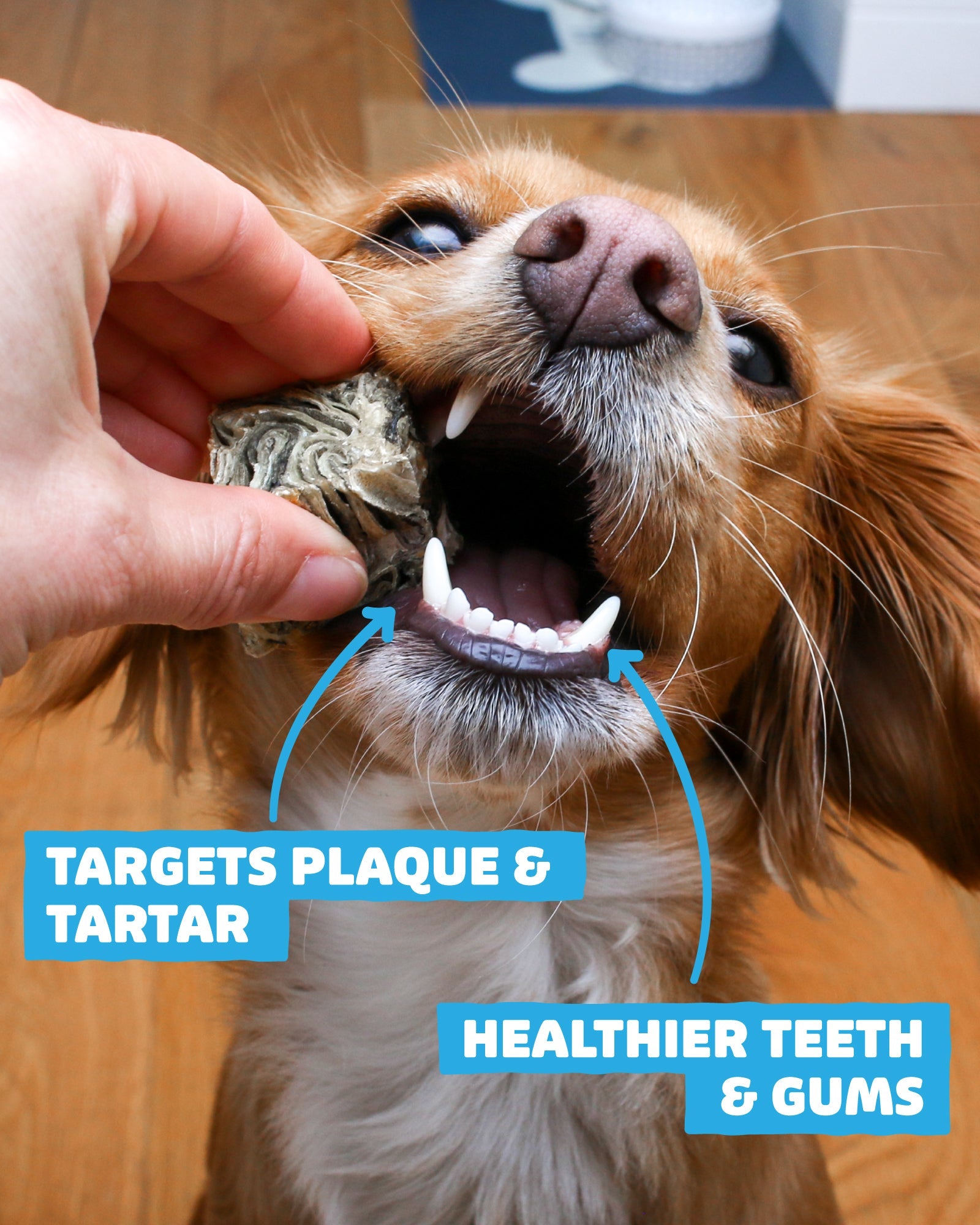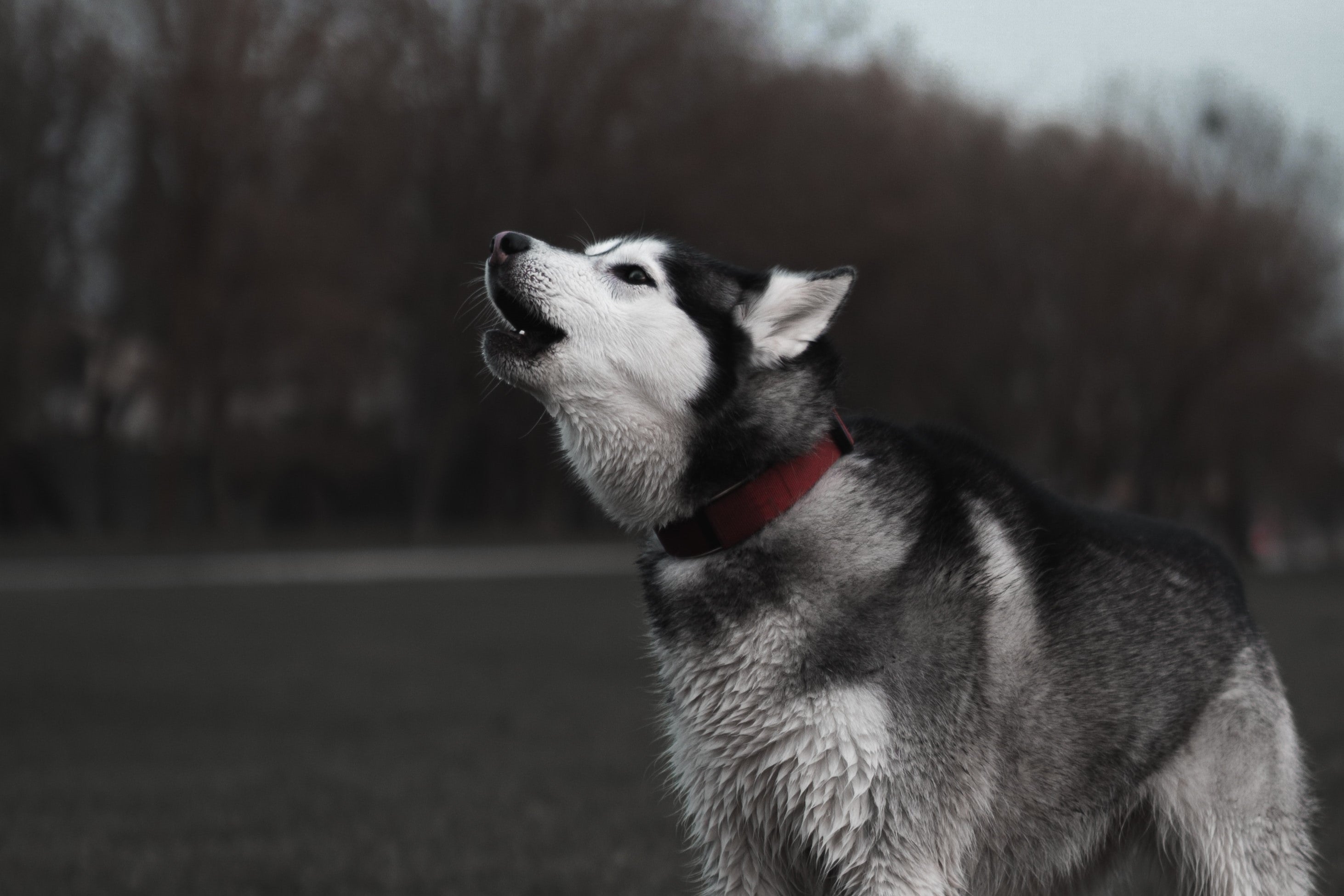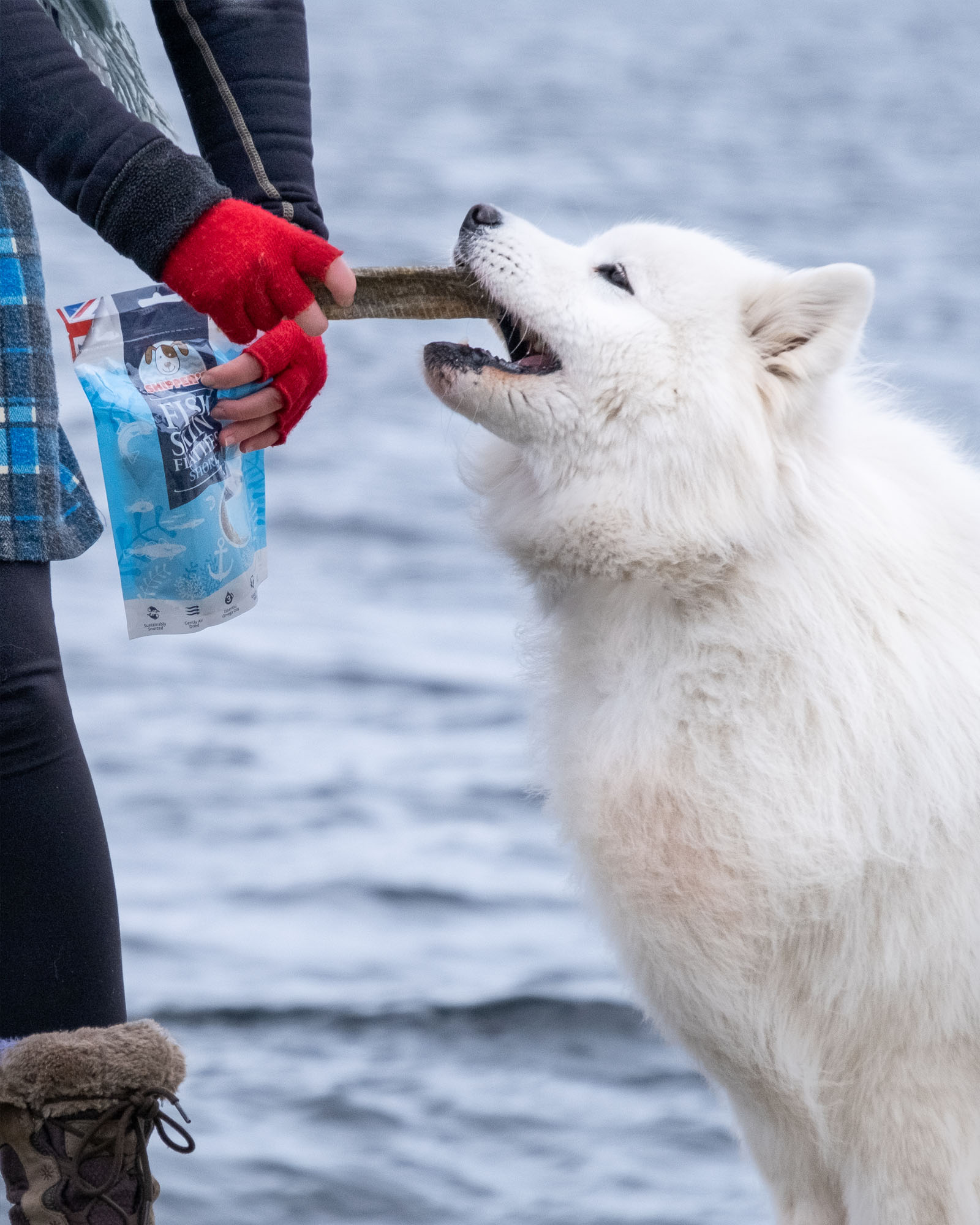For many dog owners, encountering the barking of their furry companion whenever another dog comes into view happens all too often. It's important to remember that barking is your dog's way of communicating with other dogs. However, it is vital to understand when their barking is too much and possibly even aggressive.
Unfortunately, if your dog is excessively barking towards other dogs, it won't be an overnight fix. However, with the proper guidance and strategies, you can stop your dog from excessively barking at other dogs and make your walks as enjoyable as they should be!
Why do dogs bark at other dogs?
You may often find yourself puzzled when your dog barks relentlessly at other dogs, and it can be a little embarrassing and stressful. By understanding the root causes behind your dog barking at other dogs, you can take steps to address it effectively and positively.
Communicate
Dogs are social creatures with their own unique language, and barking is just one of the many ways they express themselves and communicate with other dogs. You can gain valuable insights into their emotional states, intentions, and needs by recognising and deciphering their barks. Seong Chan Yeon DVM, MS, PhD states that a dog's vocalisation "can be divided into several types". These vocalisations "can carry the senders' emotional state" to other dogs and humans.
Alert barking
Your dog may bark out of the blue, and this can be due to various stimuli. They sit at the window, and once they see another dog, a person, a bike, or a SQUIRREL can trigger your dog to bark. Similarly, your dog may bark at different sounds, like people talking outside or a car beeping. Alert barking is very similar to territorial barking. Dogs that engage in alert barking generally have closed mouths, pointed ears and stiff tails. Your dog may alert bark to inform you of something outside or wrong.
Interestingly, although this type of barking can be a nuisance to us now, in the domestication process of dogs, humans originally bred for dogs to alert when something or someone was outside, says Preventive Vet.
Territorial defense
Just like us, dogs have their personal spaces, and they take guarding them seriously. When another dog, person or vehicle enters their territory, whether it's their home, the neighbourhood park or their backyard, barking serves as a warning to trespassers. This territorial behaviour can stem from a desire to protect what they perceive as theirs, causing them to vocalise their displeasure.
When your dog is territorial barking, this behaviour can be self-reinforcing, according to Soraya V. Juarbe-Diaz, DVM, DACVB Veterinary behaviourist. Your dog's territorial barking can be reinforced because they believe their barking has made the person, animal or object retreat from the area your dog is protecting. In Dr Jarbe-Diaz's words, "Mail carriers and delivery people, enter and exit the dog's territory as a function of their occupation, not as a result of the dog's behaviour." your dog's barking is reinforced "when pairing occurs between its behaviour and the intruder's retreat.".
Fear
Dogs, like humans, can experience fear in certain situations. When faced with a perceived threat, a dog may resort to barking as a coping mechanism. By vocalising their distress, they attempt to ward off potential harm or signal their need for reassurance from their owners.
Social interaction and excitement
Barking is not always an expression of negativity; it can also be a reflection of excitement and eagerness for social interaction. Dogs are inherently social beings, and when they encounter other dogs, especially ones they find intriguing or appealing, they may bark as a way of initiating play or simply expressing their enthusiasm.
Frustration
In some cases, barking can stem from frustration or aggression. When a dog does not feel like they are being heard, they may bark out of frustration. Likewise, if your dog has gotten into a routine of receiving a Fish Skin Flattie treat after their walk, they may bark out of frustration because you've forgotten to do that. I Heart Dogs says they bark at you to make you aware of the problem.
To combat frustration barking, find what is triggering your dog to get frustrated. Are you teaching them something new that they do not understand or telling them to stop doing something without providing the desired behaviour? Make sure you are being clear and are rewarding your dog enough, especially for learning new commands. Kristina Lotz, a professional dog trainer, says that in her experience, if her dog starts barking at her in their training sessions, she will need to "stop and change" the way she is training her dog.
Aggression
Unfortunately, "Aggression is the most common and most serious behaviour problem in dogs". Dogs may get aggressive for a few reasons, one being that they are around new dogs or people.
Look out for these signs of aggression in dogs:
- Shifting their weight to the back of their legs
- Growling
- Baring teeth
- Fixed stare
- Whale eyes
This behaviour might indicate the need for further socialisation and training to help your dog feel calmer and more confident around other dogs.
Reinforcement cycles
In many cases, barking becomes a habit because it consistently achieves a desired result, whether that’s gaining attention, making another dog move away, or creating space. Over time, your dog learns that barking works, and this reinforcement strengthens the behaviour.
For example, if your dog barks at another dog during a walk and you instinctively cross the road to avoid conflict. In that case, they may interpret that as their barking successfully removing the trigger. Similarly, if your dog barks for your attention and you respond, even to tell them off, they learn that barking gets a reaction.
To break this cycle, it’s important to stay calm and avoid reacting directly to the barking. Instead, reward your dog for calm behaviour and redirect their focus before they start barking. Over time, your dog will begin to associate quiet, relaxed behaviour with positive outcomes, and the urge to bark will gradually fade.
Leash reactivity
Leash reactivity is one of the most common reasons dogs bark at others during walks. It often happens because the leash limits your dog’s natural body language and movement, making them feel trapped or frustrated when they can’t approach freely. Some dogs bark or lunge as a way of expressing that frustration or to create distance from the other dog.
This behaviour doesn’t necessarily mean your dog is aggressive, it’s usually rooted in emotion. Working on loose-lead walking, staying at a comfortable distance from triggers, and teaching focus cues like “look” or “watch me” can help your dog feel more relaxed and in control. The goal is to make your dog feel safe and confident, even when they can’t greet or move the way they want to.
Socialisation and training
Regular socialisation and training play a vital role in helping your dog become more comfortable and confident around other dogs. Enrol your dog in obedience classes or seek out controlled socialisation opportunities where they can interact with well-behaved dogs in a supervised environment. This exposure can help your dog develop positive associations and better social skills.
If you have a puppy, preventing them from developing the behaviour of barking at other dogs can easily be done through socialisation. The key socialisation period is between 4 and 12 weeks of age. According to PDSA, the socialisation period is important as, without it, puppies tend to be more anxious, which can result in puppy behavioural issues.
Unfortunately, there isn't another socialisation period after those 4 to 12 weeks. Therefore, you will need to correct the barking behaviour.
Core training principles to use
Before you start working on your dog’s barking, it helps to understand the key principles behind how dogs learn. These foundations shape how effective your training will be and help your dog understand what you’re asking for.

Operant conditioning & reinforcement
Dogs learn by association. Behaviours that earn rewards are more likely to be repeated. When your dog stays calm or quiet around another dog, reward that behaviour with praise or a treat. Over time, they’ll understand that calmness brings good things. Avoid scolding or pulling them away sharply, as that can increase stress and make barking worse.
Withholding rewards to shape behaviour
If your dog barks for attention and you react, even by saying “no,” they learn that barking works. By calmly ignoring the barking and rewarding quiet moments instead, you teach your dog that only calm behaviour earns a reward. This helps reduce attention-seeking barking over time.
Classical conditioning & counter-conditioning
Many dogs bark because they feel uneasy when they see another dog. Counter-conditioning helps change that emotional response. You do this by pairing the sight of another dog with something positive, like praise, treats, or play, so your dog starts to feel happy, not stressed, in those situations.
Using markers & cues (calm marker, “look,” “watch me”)
One effective way to address your dog's barking towards other dogs is to teach them to focus on you on command. By training a specific cue, such as "look" or "watch me," you can redirect your dog's attention towards you when they start fixating on other dogs.
Training your dog these attention-grabbing cues in a calm environment with minimal distractions is the perfect start to ensure you are the sole focus of your dog's attention. Gradually increase the level of distractions, reinforcing their ability to maintain focus on you even when other dogs are present. With consistent practice and positive reinforcement, your dog will learn to turn to you for guidance and reassurance, reducing their inclination to bark at other dogs.
Similarly, teaching your dog recall commands such as "come" provides you and your dog's safety by ensuring your dog will come back to you on command. If your dog is not listening to your commands, Dogs Trust states that it is most likely due to more exciting distractions such as dogs or SQUIRRELS!
The 5-phase training plan to reduce barking
Before you dive into training, remember that your goal isn’t to silence your dog. The aim is to help them feel calmer and more confident around other dogs.
This five-phase plan builds on your dog’s comfort levels gradually, focusing on reducing reactivity and replacing barking with calm, focused behaviour.
Each phase builds upon the last, so take your time and celebrate small wins along the way.
Phase 1: Identify triggers & threshold
Developing a deeper understanding of your dog's triggers and thresholds that lead to them barking at other dogs is essential. Dogs may bark out of fear, anxiety, frustration or excitement, and identifying the underlying emotions can help you address your dog's behaviour more effectively.
Observe your dog's body language, paying attention to signs of stress or discomfort, such as tense body posture, raised hackles, or pinned-back ears. You can tailor your training approach and provide appropriate support as these cues tell you when your dog is reaching their threshold (the distance or situation where they begin to feel uncomfortable or excited).
By recognising these triggers and working below that threshold, you can help your dog stay relaxed and prevent barking before it starts.
Phase 2: Exposure at a safe distance & rewarding calm behaviour
Once you know what triggers your dog's barking, begin practising calm exposure. Choose quiet areas where your dog can see other dogs at a distance that doesn't cause a reaction. When they notice another dog, but stay calm, immediately praise and reward them.
If your dog starts to bark, calmly create more space by walking in a different direction. During this period of training, you may also find that certain routes are busier with other dogs. Try temporarily changing your walking path to help prevent overstimulation and allow them to regain their composure.
Please keep in mind that distancing and going on a different walking route are not permanent fixes to your dog's barking. However, these are great strategies to begin with in order to manage your dog's barking.
Phase 3: Reduce distance gradually
As your dog becomes more comfortable seeing other dogs at a distance, you can start reducing that distance slowly over time. The key is to move at your dog’s pace and not your own. If they bark, lunge, or tense up, that’s a sign you’ve gone too close, too quickly. Step back to the last point where they were relaxed and build from there.
You’ll use a method called desensitisation and counter-conditioning to gradually reduce distance. We’ll explore this in more detail later.
Phase 4: Focus cues & distractions
Redirecting your dog's attention can be an effective way to interrupt their barking towards another dog. Carry training treats or a favourite toy during walks to redirect your dog's focus away from the other dog. If you are still encountering issues with grabbing their attention, try some more enticing and high-value rewarding treats, such as Dried Sprats for dogs.
With the treats or toy, engage your dog in a game or ask for simple commands like sit or stay to shift their focus onto you and away from the dog that is triggering your dog to bark.
Phase 5: Real-world walks & generalisation
Once your dog can stay calm in controlled situations, it's time to put their training into practice on real walks. Begin by heading out during quieter times, then gradually increase your dog's exposure to busier areas as their confidence grows.
Stay consistent with rewarding your dog whenever they remain calm around a trigger or respond to your cues. Over time, this repetition helps your dog generalise their calm behaviours across different environments, distractions, and levels of excitement.
Using desensitisation and counter-conditioning to stop your dog from barking at other dogs
Desensitising and counter-conditioning put those core training principles into action. This method focuses on gradually changing your dog’s emotional response to other dogs, which will help them feel calmer and more confident instead of anxious or reactive. In a case study by Joke Monteny and Christel Moons, they stated that desensitisation and counter-conditioning can be used together:
STEP ONE
Create a controlled environment for desensitisation sessions, choosing a quiet location where you can observe other dogs from a distance that keeps your dog calm and relaxed.
STEP TWO
Gradually expose your dog to other dogs, beginning at a distance that doesn't trigger their barking response. Use positive reinforcement, such as training treats and praise, to create positive associations with the presence of other dogs.
STEP THREE
Over multiple sessions, decrease the distance, ensuring your dog remains calm throughout the process.
Seeking professional guidance from a qualified dog trainer or behaviourist can provide invaluable support in tailoring the desensitisation plan to your dog's specific needs.
Remember to be consistent and patient, and celebrate small victories. With time and dedication, you can help stop your dog from barking at other dogs and foster better social interactions.
Remove their motivation to bark

Breaking the satisfaction cycle
Barking can become a self-rewarding behaviour for dogs, leading to a cycle of satisfaction. When your dog barks and their desired outcome is achieved (e.g., attention, access to something they want), they learn that barking gets results.
To break your dog's satisfaction cycle, it's essential to withhold any rewarding response when they bark and instead provide attention or rewards when they remain quiet and calm. This teaches that your dog's problematic behaviour, such as excessive barking, will not get a response, gradually diminishing their motivation to bark if they are seeking attention, etc.
If your dog's barking is caused due to fear or territorial tendencies, management techniques such as stopping your dog from seeing the triggers can help. The triggers can be dogs or people coming towards their home. As Dr Jarbe-Diaz said, your dog's barking is reinforced when pairing occurs between their barking and the retreat of the dog or person. To combat this initially, some trainers recommend closing the blinds so your dog can not see out the window, eradicating your dog's satisfaction.
Attention-seeking strategies
Many dogs bark to seek attention from their owners because they may be bored, lonely, or simply craving interaction.
Just like you should break your dog's satisfaction cycle, counter their motivation to bark by ensuring they receive plenty of mental stimulation and physical exercise, engaging in playtime, training sessions, or puzzle toys that keep their minds occupied. You can proactively minimise their desire to bark for attention by meeting their needs.
Environmental modifications
Evaluate your dog's environment for any stimuli that may trigger excessive barking. Consider playing white noise, closing the curtains, or putting up barriers to reduce visual and auditory triggers.
Although this does not directly tackle and fix the trigger causing your dog to bark, it does create a calm and peaceful atmosphere that can help your dog feel more secure and less inclined to bark.
Consistency and training
Consistency is key when working to remove your dog's motivation to bark. Establishing clear training methods by using the same command words and using training treats to reward at the right moments will gradually reinforce the desired behaviours in a positive manner.
Adapting your approach based on your dog and surroundings
Every dog is unique, and their environment plays a big part in how they reacts to others. Understanding your dog’s temperament, past experiences, and living situation will help you tailor your training for the best results.
Leash reactivity vs off-leash barking
Dogs often behave differently when they’re on a lead compared to when they’re free to roam.
Leash reactivity usually happens because the dog feels restricted. Since they do not have the freedom to move away or greet another dog naturally, they may bark or lunge out of frustration or anxiety.
On the other hand, off-leash barking tends to come from excitement or over-arousal. If you find that your dog is leash-reactive, focus on calm exposure at a safe distance and reward them when they stay calm to a trigger. If your dog barks off-lead, start training their recall. Additionally, introducing controlled socialisation will help them learn how to stay calm and listen even when excited.
Reactive breeds and high-energy dogs
Some breeds, particularly those bred for guarding, herding, or hunting, are naturally more alert and vocal. High-energy dogs may also bark more simply because they have excess energy to burn.
Before training sessions, make sure your dog’s exercise and mental stimulation needs are met. A well-exercised dog is far less likely to become reactive on walks. Games like fetch, scent work, or giving a chew, such as Fish Skin Flatties can help take the edge off and make training more effective.
Rescue dogs or dogs with a fear history
Rescue dogs often come with unique challenges due to past experiences or limited socialisation. They may bark out of fear rather than confidence, especially around unfamiliar dogs.
The key is patience and trust. Keep training sessions short and positive, always working below your dog’s fear threshold. Pair new sights and sounds with praise and treats so they begin to associate them with safety, not stress. Progress may be slower, but each calm reaction is a real win.
Multi-dog households and chain reactions
If you have the joy of living with more than one dog, barking can spread quickly. One starts, and the rest join in.
Practise calm behaviour with each dog individually first. Once they understand what’s expected, begin reintroducing group walks or time together. Ensure to reward their calmness and ignore excitement consistently. Over time, your dogs will start to mirror each other’s calm reactions instead of feeding off the noise.
Handling common setbacks
Training isn’t always a straight line. Even when you’re consistent, your dog might have off days or moments when their old habits resurface. These temporary setbacks are completely normal, and the key is knowing how to respond without undoing your progress.
Dog escalates or lunges instead of calming
If your dog suddenly lunges or barks intensely, it usually means the situation is too overwhelming. Don’t try to correct or shout over them. Instead, calmly move away until they can focus again.
Once they’re relaxed, reward the calm behaviour and start fresh at a greater distance next time. This teaches your dog that staying calm, not barking, makes the situation easier and more rewarding.
Regression after progress
It’s common for dogs to make great progress and then seem to slip back. There are several reasons for this, including changes in routine, increased stress, or skipped or missed training sessions.
When this happens, return to easier exercises where your dog can succeed and rebuild their confidence.
If you find that your dog is barking to gain your attention, it’s crucial that you avoid reacting to them until they have calmed down. With this, ensure the rest of the members in your household follow the same set of training rules, which will prevent your dog from getting confused and stunting the training progress.
Dog refuses cues or ignores redirection
If your dog suddenly stops responding to cues like “look” or “watch me”, it’s often because they’re over their threshold. This means they are too distracted or stressed to concentrate.
It’s important to give your dog space and wait until they’re calm before asking again. Keep your sessions short and finish on a positive note. That way, your dog stays engaged and ends training feeling successful, not frustrated.
Signs of aggression or stress you must heed
From stress, overstimulation, fear, etc, your dog may start to display aggression. You can get a general idea of how your dog is feeling through their body language before anything physical happens. Signs of aggression to look out for are a stiff posture, growling, hard staring, or lip-curling.
If your dog is starting to show signs of aggression, calmly steer and distance your dog from the other dog or trigger, and allow your dog to decompress. It’s important that you do not punish or force your dog, as this can add to your dog’s stress and confusion.
When professional help is needed
If your dog's barking behaviour persists or becomes problematic, consulting a professional dog trainer or behaviourist may be beneficial. They can provide specialised guidance, tailor training techniques to your dog's specific needs, and help you address any underlying issues contributing to their barking behaviour. With the dog trainer or behaviourist's expertise, you can develop a customised plan to modify your dog's behaviour effectively.
Expert approved dog training treat:
 |
Skipper's Fish Training TreatsThese delicious fish-shaped training treats are made from 80% freshly prepared and gently steam-cooked Salmon & Trout. They're a bite-sized treat, making them ideal for training sessions and rewarding good behaviour. PLUS! Our Fish Training Treats are naturally rich in Omega-3 that can help support brain function, heart health, joints, and a shiny, healthy coat. |
Vet thoughts on dog barking at other dogs
Vet thoughts by Rebecca MacMillan BVetMed BSAVA PGCertSAM MRCVS
If your dog barks incessantly at other dogs, then it can be stressful and frustrating. Unfortunately, there is not usually a quick fix and you will need to start training and slowly de-sensitising your pet. Positive reward-based training works best, alongside a patient and calm approach. You must never punish your dog as it could cause your pet to become anxious and may make the behaviour even worse. For owners that are struggling, I would always recommend that they speak with a qualified dog behaviourist for help and support.




























